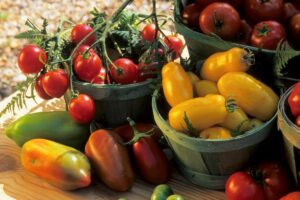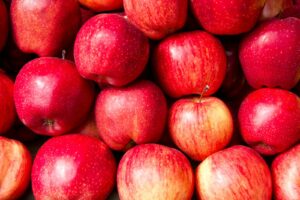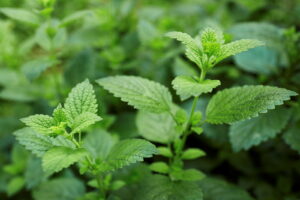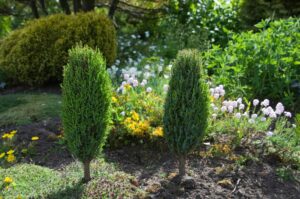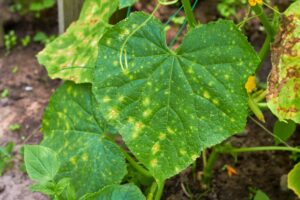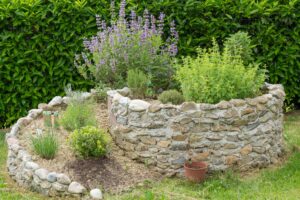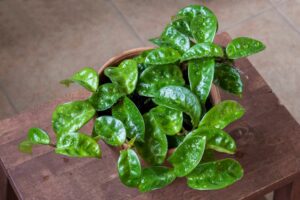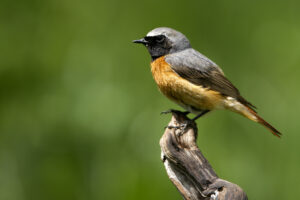Garlic chives: tips for sowing, planting & harvesting
Growing garlic chives in the garden is simple and promising. We reveal what to consider when sowing Chinese chives and how to harvest them.

Garlic chives (Allium tuberosum) are the perfect herb for those who do not want to miss the aromatic taste of garlic, but do not want its strong smell. They do not leave a typical garlic smell in the mouth or on the fingers. In addition, the herb is extremely easy to care for and thrives not only in garden beds but also in a pot on the windowsill or in a balcony box. The plant is great for use in the kitchen and also beautiful to look at, as it forms fine white flowers that are delicately fragrant throughout the summer. In this article we reveal everything about the origin, proper sowing, care, propagation, harvesting, as well as the use of garlic chives.
Contents
Garlic chives: origin and properties
Garlic chives are also called Chinese chives and belong to the leek plant genus (Allium). Thus, it is closely related to chives (Allium schoenoprasum), leeks (Allium porrum) and onions (Allium cepa). The aromatic herb probably originated in China but grows wild in most parts of tropical Asia. Nowadays, garlic chives are cultivated almost all over the world and are highly appreciated.

In terms of appearance and growth, garlic chives strongly resemble regular chives. However, the stalks are slightly wider and larger overall. It is a perennial, herbaceous plant that grows up to 80 centimetres in height. It forms bulbs similar to small tubers, which are white. The stalks are flat, 1.5 to 8 millimetres wide and green. The star-shaped, white flower umbels bloom from June to September and attract numerous insects.
The best varieties
You can’t go wrong when choosing a variety of garlic chives. The varieties differ mainly in terms of their growth height and the thickness of the stalks. A small overview of the varieties will give you an idea of which varieties are worth growing:
- ‘Fat Leaf’: as the name suggests, the stalks are wide and thick
- ‘Kiss me’: extra-wide stalks
- ‘Knolau’: up to 50 centimetres tall, strong-growing
- ‘Monstrosum’: up to 80 centimetres tall
- ‘Neko’: forms flat, broad stalks with a delicate aroma
- ‘Pink’: bears – as the name implies – pink flowers and wide, juicy leaves
- ‘Sapras’: high yield and aromatic
- ‘Shiva’: grows up to 30 centimetres tall, is very strong-growing and high-yielding
- ‘Wagners Kobold’: thin, aromatic stalks
Sowing garlic chives
Sowing is naturally the first step towards cultivation. In the following sections, we answer your questions on when, where and how to best sow garlic chives.
The right location
The herb from China thrives both in garden beds and in pots. It prefers a full sun to sunny location. Ideally, the plant should be in full sun for half the day, but it can just about cope with semi-shaded locations as well. On the other hand, the chives do not want to be completely in the shade. The soil should be rich in humus and nutrients. In addition, the tasty herb loves evenly moist soil. However, it does not cope at all with waterlogging.

Where to sow garlic chives?
- Full sun to sunny location
- Humus and nutrient-rich soil
- Uniformly moist
- No waterlogging
Tip: Good planting neighbours for garlic chives include tomatoes (Solanum lycopersicum), cucumbers (Cucumis sativus), carrots (Daucus carota subsp. sativus) and strawberries (Fragaria). They are less compatible with legumes such as peas (Pisum sativum) and beans (Phaseolus vulgaris) or with cabbages such as white cabbage (Brassica oleracea convar. capitata var. alba).
How to plant garlic chive seeds
Garlic chive sowing can be done either in pots under glass, on the windowsill, or directly outdoors later on. The best time to start sowing is from the end of March. The pre-sown seedlings can then be planted out in the garden bed from mid-May. Direct sowing into the bed can be done from April to August.
When to sow garlic chives?
- Sow from the end of March
- From mid-May, pre-grown plants can be planted outdoors
- From April to August outdoors
The advantage of growing in pots on the windowsill or under glass is that you can start sowing earlier and harvest the first delicious stalks sooner. For sowing, we recommend our Plantura Organic Herb & Seedling Compost, which is perfectly adapted to the requirements of garlic chives and provides the herb with the optimum conditions for growth.

Sowing garlic chives in a pot:
- Seedling compost like the Plantura Organic Herb & Seedling Compost
- Filling seedling pots with compost
- Planting distance: 30 x 25 cm
- Cover with a 1 cm layer of compost
- Water
- Germination period: 14 – 28 days
- Ideal germination temperature: 18 – 20 °C
- Keep uniformly moist
- Separate after seeds sprout if necessary

- Perfect for herbs as well as sowing, propagating & transplanting
- For aromatic herbs & healthy seedlings with strong roots
- Peat-free & organic soil: CO2-saving composition
When the pre-sown seedlings are sufficiently large and the planters are completely rooted, it’s time to plant the garlic chives. This can be done either in a garden bed or in a pot.
Alternatively, you can sow your garlic chives directly outside. To do this, simply follow the instructions below:
- Prepare the bed: loosen soil well, remove weeds
- Enrich soil with a natural fertiliser with a long-term effect, such as our Plantura All Purpose Plant Food or ready-made compost
- Create seed furrows
- Sowing depth: 2 cm
- Row spacing: 30 – 40 cm
- Planting distance: 25 cm
- Cover seed with compost
- Water well
- Keep moist until seed emergence

Propagating garlic chives
You can easily propagate garlic chives yourself. The easiest and most promising method for this is by dividing them.
Propagating by division at a glance:
- For division, plants must be at least 3 years old
- Dig out garlic chives
- in spring or autumn
- Divide plant by hand into 2 or 3 parts
- Carefully detach parts from each other (if necessary with secateurs or a spade)
- Plant
- Water well
Plant care
Caring for garlic chives naturally involves watering and fertilising. This tasty herb likes evenly moist conditions, so you should always check the soil and water as needed. It is also important to keep the bed where the plants grow free of weeds. This is accomplished either by regular weeding, putting down a mulch layer or undersowing. Fertilisation is best done using a fertiliser with natural long-term effects, or alternatively compost. These two sources of nutrients are sustainable and provide your plant with everything it needs to grow over the long term.
Tip: You only need to apply our Plantura All Purpose Plant Food twice a year: once in spring shortly after sprouting and another time during the main growth phase, for example in June.
How do I look after garlic chives?
- Keep uniformly moist
- Remove weeds by weeding, mulching or undersowing
- Fertilise in spring and in June
- For this purpose, use fertilisers with a long-term effect, such as our Plantura All Purpose Plant Food.

- Perfect for a variety of plants in the garden & on the balcony
- Promotes healthy plant growth & an active soil life
- Long-lasting fertiliser that is free from animal products - child & pet friendly
Overwintering garlic chives
Many gardeners have certainly ask themselves at some point whether garlic chives are hardy. The simple answer to this question is a clear yes. Garlic chives are perennial. Therefore, overwintering the plant is easy. Temperatures down to minus 20 °C do not bother the herb. In spring, it then sprouts again all by itself and you will have many years of pleasure from this popular kitchen herb.
Harvesting and preserving
A great benefit of garlic chives: it can be used almost all year round.
When and how to harvest garlic chives?
- Harvest time: spring to autumn
- Garlic chives in a pot on the windowsill can be harvested all year round
- Use scissors or a sharp knife when harvesting
- Cut stalks 2 fingers width above the ground
- The flowers are also edible and can be harvested
Tip: The more radically you cut back your garlic chives, the more vigorously it will sprout again afterwards.

Once your garlic chives have been harvested, they will unfortunately only keep fresh for two to three days. They can be kept in a glass with water or stored in the vegetable compartment of the refrigerator. It is therefore advisable to always harvest only as much as can be used fresh. Of course, there are also different ways to preserve the herb. For example, you can easily freeze your garlic chives. Other methods involve pickling them in salt or in vinegar and oil. Using them in pesto helps the herb last longer and also tastes excellent. However, drying is not highly recommended. They lose almost all of their flavour when dried.
Summary: Storing and preserving
- Ideally, always harvest only as much as can be used fresh
- Put fresh stalks in a glass of water
- Alternatively, wrap in a damp kitchen towel and store them in the vegetable compartment of the refrigerator
- Preserve garlic chives by freezing them
- Soak in salt
- As pesto
- Put in vinegar and oil
- Garlic chives are not suitable for drying

Use of garlic chives
Those who are less familiar with the herb may find themselves asking: how do I actually use the herb? Garlic chives are versatile in cooking: they taste good in herb curd, salads, soups, as seasoning and refining savoury dishes or as decoration and for dressing dishes. Or simply try fresh garlic chives on a delicious sandwich. The small bulbs can be steamed and used like spring onions. The flowers are also edible. For example, you can use them as decoration or in salads. The best thing about it: unlike real garlic, the herb does not leave a smell in the mouth.
And last but not least: are garlic chives healthy? They contain a lot of the substance allicin – as do other leek plants. Allicin strengthens the immune system against bacteria and viruses and is also said to help lower blood sugar levels.
For those who prefer real garlic, we have provided tips and tricks for growing garlic in your own garden.
